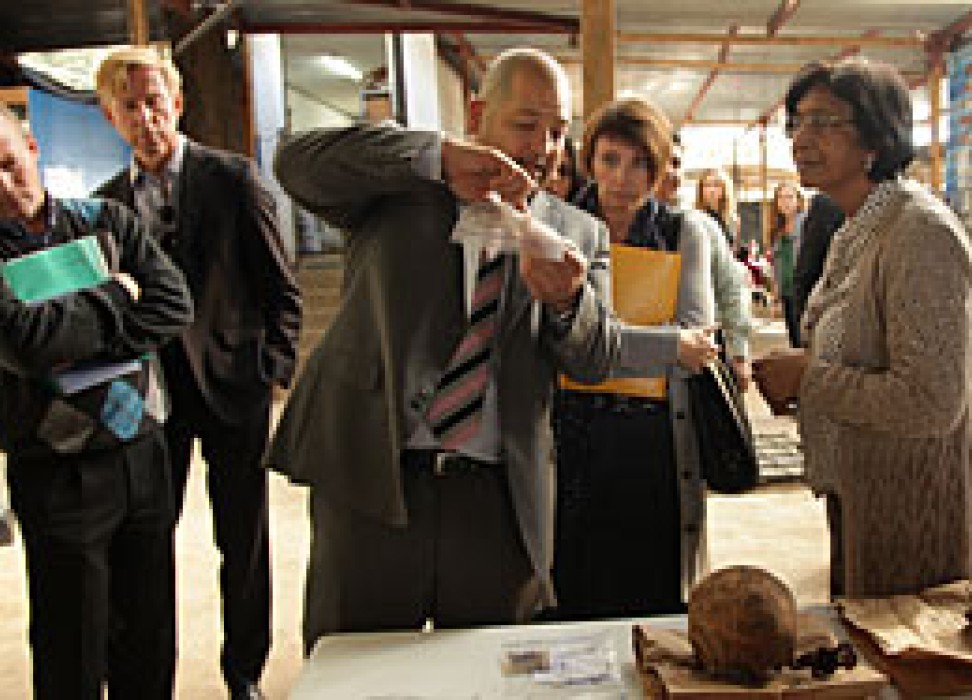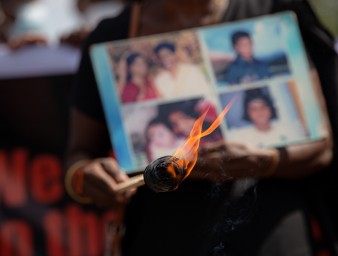“My name is not XX”: searching for the truth by naming the disappeared
23 March 2012

Thousands of unidentified bodies, labelled XX, have been buried in common graves at La Verbena cemetery, in Guatemala City, for many decades. Many of them are believed to be the victims of enforced disappearances during the country's 36-year-long civil war (1960-1996). More than 200,000 people - most of them civilians - were killed or disappeared during the conflict.
The "My Name Is Not XX" campaign, launched by the Guatemalan Forensic Anthropology Foundation in 2010, aims at exhuming and identifying the remains of the victims buried at La Verbena by matching their DNA with DNA samples provided by the victims’ family members. The main goal of the project is to bring dignity to the victims and a sense of closure to their families by ensuring that the thousands buried as “XX” finally have a name.
The Foundation is a non-governmental organization that contributes to the strengthening of the justice system and to the respect for human rights through the investigation, documentation, dissemination, education and awareness-raising of historic violations of the right to life and cases of non-clarified deaths.
The work of the Foundation “demonstrates that the relentless efforts of victims’ families to finally know the truth about the fate of their loved ones have not been in vain,” said UN Human Rights Chief Navi Pillay during a recent visit to La Verbena cemetery.
She said that the perpetrators of these gross human rights violations “may have tried to silence the victims who are buried here, but they were unable to silence their families.” “Each exhumed and identified body helps to heal the wounds that many tried to close without allowing the truth to be known,” she said.
The right to the truth, which is the focus of the International Day observed by the United Nations on 24 March, was first recognized in cases of missing and disappeared persons. Its importance in that context has not abated, but the right has evolved and its application has been extended to other gross violations of human rights such as extrajudicial executions, torture and ill treatment, including sexual violence.
It provides for victims and their families the right to know the truth about the circumstances in which violations of human rights occurred, including who participated in them. In cases of enforced disappearance and missing persons, it also implies the right to know the fate and whereabouts of the victim.
Tools for ensuring the right to the truth include truth-seeking mechanisms, such as truth commissions, commissions of inquiry and fact-finding missions, as well as international, regional and national courts, and national human rights institutions.
At La Verbena cemetery, Pillay said that the work carried out by the Guatemalan Forensic Anthropology Foundation is not only promoting the right to the truth, but it is also providing “valuable support to the justice system in its efforts to put an end to impunity for serious human rights violations.”
“The results of the exhumations and identifications being carried out here,” she said “are helping the country to move towards reconciliation.” “A reconciliation which can only be achieved through a comprehensive and transparent process of justice, truth, reparation and guarantees of non-recurrence.”
The UN Human Rights Office in Guatemala works closely with the Forensic Anthropology Foundation, the victims’ families and other civil society organizations by providing technical support and advisory services.
The Office, established in 2005, monitors the human rights situation in the country and provides technical assistance to state institutions and civil society on the implementation of international human rights obligations. The Office aims to empower civil society, including vulnerable groups, to understand and claim their rights and to support Government institutions in developing legislation and policies that, among others, provide redress for victims of human rights abuses.
The International Day for the Right to the Truth concerning Gross Human Rights Violations and for the Dignity of Victims was established by the UN General Assembly in 2010 and is observed annually on 24 March.
The right to the truth is recognized in several international and regional treaties and instruments, including the International Convention for the Protection of All Persons from Enforced Disappearance, national laws, national, regional and international jurisprudence, and numerous resolutions and statements of intergovernmental bodies at both the international level and the regional level.
23 March 2012

VIEW THIS PAGE IN:

